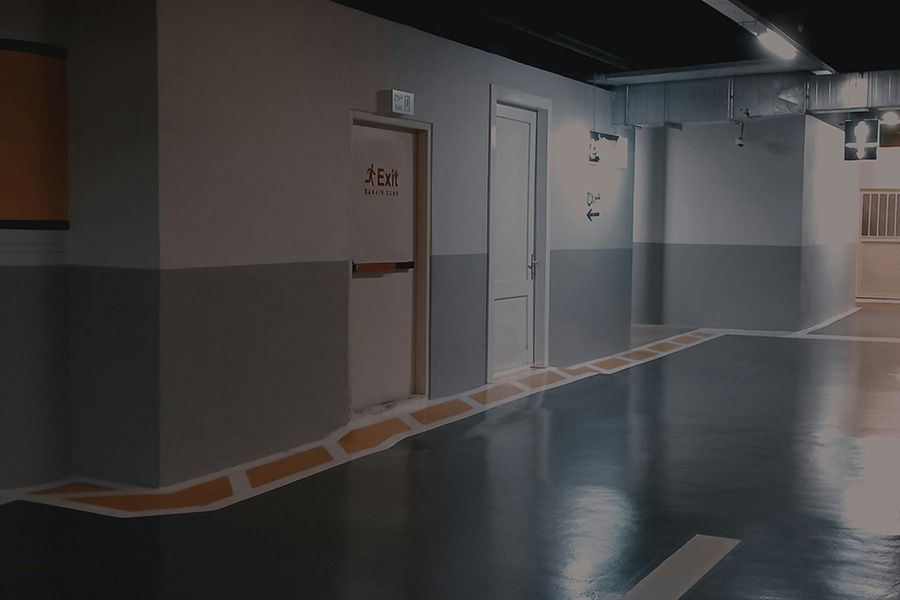Fire safety in your workplace is a critical aspect of any safety protocol. Understanding and implementing effective fire safety measures is not only a matter of complying with laws and regulations, but also a way to protect both people and property. In this article, we explore the main things to consider, including the importance of a clear fire safety plan, preventive measures, firefighting equipment, and the importance of proper fire doors and fittings.
The risk of inadequate fire safety planning
The lack of a clear and well thought-out fire safety plan can have devastating consequences. An effective plan includes not only the necessary equipment such as fire extinguishers and smoke alarms, but also detailed evacuation procedures and regular staff training. Not being prepared for a fire can result in serious damage to both people and property.

Fire prevention measures
The most effective way to manage fire risks is to prevent them from happening in the first place. An inadequate or completely absent fire safety plan in your workplace is not only a violation of basic safety standards, but also poses a significant risk of serious damage and loss. Fire safety planning is a multifaceted process that requires careful attention not only to equipment and tools but also to training and procedures. This includes using fireproof materials in building construction and furnishings, such as fireproof flooring and workstations. It is also important to regularly check and maintain electrical systems and equipment to prevent any faults that could lead to a fire.
The role of equipment and its limitations
While basic equipment such as fire extinguishers and smoke alarms are essential, their effectiveness is limited without a well thought-out plan for their use. Fire extinguishers must be the right type and size for the specific risks in each area and must be easily accessible. Smoke alarms must be properly installed and regularly tested to ensure they work in an emergency. Without a detailed plan covering these aspects, even the best equipment can become ineffective.
The importance of evacuation procedures
An effective fire safety plan must include well-designed evacuation procedures. This means clear routes for evacuation, emergency exits that are appropriately marked and free of obstructions, and strategies to help people who may need extra support during an evacuation. Inadequate evacuation routes and procedures can lead to chaos and confusion in an emergency, making safe evacuation difficult and increasing the risk of injury.
The critical role of staff training
Training and drills are crucial components of fire safety planning. Regular and comprehensive training ensures that all staff are aware of how to respond to a fire, how to use firefighting equipment and how to follow evacuation procedures. Without this training, even the most elaborate plan can become ineffective, as staff are not prepared to act appropriately during a fire.
Fire safety at work - fire fighting equipment
For optimal fire safety in your workplace, there should be adequate equipment to quickly fight a fire. This includes access to fire extinguishers and fire blankets. The importance of having these within reach cannot be underestimated - a fire extinguisher should be available within seconds in any area where there is a risk of fire.
Fire protection doors and required fire insulation
Fire protection doors and fire insulation are essential to effectively control and limit the progress of a fire and the spread of smoke. These specially designed doors and insulation materials act as a vital barrier, which can significantly reduce the damage caused by a fire. Their ability to resist fire and smoke for an extended period is crucial in delaying the spread of the fire, giving people more time to evacuate safely. As well as resisting fire, these doors also help to prevent the spread of smoke, which is often the most dangerous aspect of a fire, and can quickly make escape routes impassable.
Materials and construction for fire safety
When it comes to materials and construction for fire protection doors and insulation, choosing the right material is crucial. Fire-resistant doors are often made of steel or other non-combustible materials and are designed to withstand extreme temperatures. These materials are not only resistant to fire but also have the ability to insulate and prevent heat transfer, which is essential to protect neighboring areas from the heat and smoke of a fire. Proper installation and maintenance of these doors is equally important, as even the slightest flaw can reduce their effectiveness.
Understanding the fire classes of doors
The fire classification of doors is a central part of fire safety and a crucial factor in choosing the right door for a building. Each fire class represents the amount of time the door can be expected to resist fire during a fire. This time period is critical as it can give occupants valuable time to evacuate safely. Fire ratings are usually defined in terms of minutes - such as 30, 60, 90, or 120 minutes - and these numbers indicate how long the door can resist the progress of the fire.
MaxiDoor offers the following fire doors:
- FB-BD - 60 minutes fire resistance
- MD 60 - 60 minutes fire resistance
- All doors are available in 30-60-90 minutes, and more when ordering a special door.
The choice of the right fire rating for a door depends on several factors, including the design of the building, its use, and the specific risks in different parts of the building. For example, a door leading to a room with a high fire risk may require a higher fire rating than a door in a less risky part of the building. The correct choice of fire rating not only ensures that those inside the building have time to react and evacuate in the event of a fire, but also helps to prevent or limit damage to property and infrastructure.
The importance of emergency fittings
Emergency fittings, such as evacuation fittings, panic bars and exit signs, are another important component of the fire protection strategy. These fittings must be designed to withstand the extreme temperatures and conditions that occur during a fire. But it is not enough for them to be fireproof - they must also function in a way that allows for a quick and safe evacuation. For example, door locks and handles should open easily even under the stressful conditions of a fire.
Modern fittings, such as motorized locks, offer advanced features that can contribute to security. One example is systems that automatically unlock doors in the event of a fire alarm, ensuring that escape routes are available and no one is trapped. These types of fittings can be integrated with the building's overall security system, enabling a coordinated and effective response to a fire emergency.

Automatic door functions for increased fire safety in the workplace
Many modern security systems include automatic door functions that react to sound, smoke or a signal from the fire alarm. These systems can ensure that doors close to prevent the spread of fire or, conversely, open to facilitate evacuation.
Regular safety drills and evacuation procedures
Having established safety procedures and practicing them regularly is of utmost importance. Everyone, from new staff to the most experienced, should be familiar with these procedures and know how to act in the event of a fire.
Prevention of damage from fire
In areas where the risk of injury from fire is high, emergency showers should be installed. An emergency shower station should be available within a reasonable distance (at least 10 meters) from workplaces with a high fire risk.
Summary of our short guide on fire safety in the workplace
Maintaining a high level of fire safety in a workplace requires a comprehensive approach ranging from preventive measures to proper equipment and training. By carefully considering these aspects and continuously evaluating and improving fire safety plans and equipment, workplaces can ensure a safe and secure environment for everyone.





